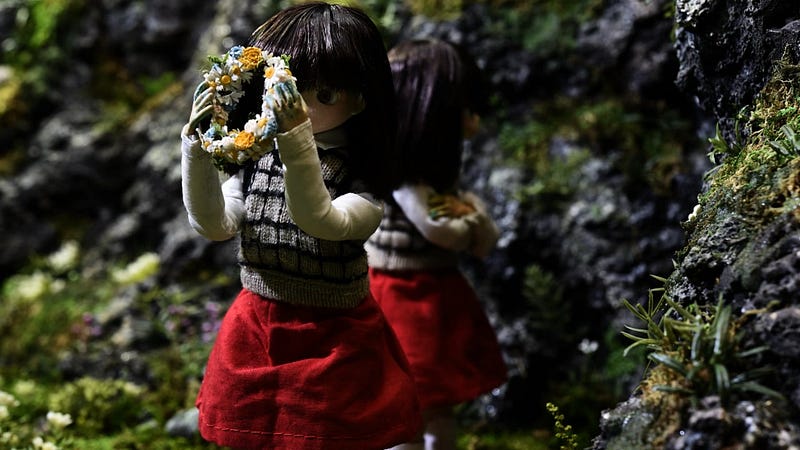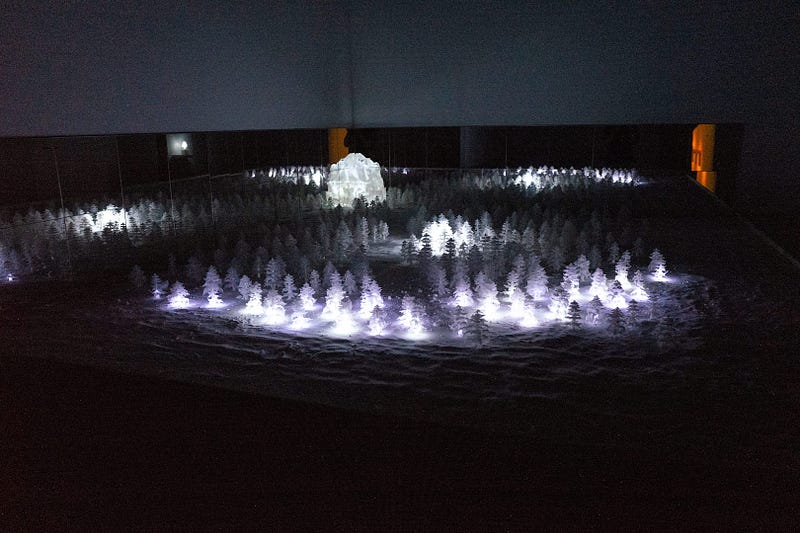
Okinamai/Forest This Flower Blooms
(2015). Photo courtesy of Nishikata Film Review.
F.I.L.M. is a series of cinema-focused events sponsored by the Hamilton College Cinema and Media Studies department. Every semester, F.I.L.M. hosts screenings, visiting artists, and lecturers at the College. Normally, these events would be held in the Bradford Auditorium with a live discussion and a Q&A, as the space lends itself to an immersive experience. However, in an attempt to follow COVID-19 regulations, F.I.L.M. screenings are limited capacity and have become more remote-friendly this semester.
F.I.L.M. is back again and has kick-started the semester with a collection of animated films. On March 5 and 6, Professor and Director of Cinema and Media Studies Scott MacDonald and Associate Professor of Japanese Kyoko Omori presented a series of director Murata Tomoyasu’s unique and beautifully crafted short-form stop-motion animations.
MacDonald said that “Tomoyasu Murata was born in Tokyo in 1974. His stop-motion animation and installation pieces explore the themes of nature, life, death, family, and memory. Inspired by Japan’s traditional Bunraku puppet theater and Noh drama, Murata sees the process of creating puppets and transforming still images into a movie as an act of contemplation and remembrance.”
Okinamai/Forest This Flower Blooms
(2015) begins with an anthropomorphic fox running through a series of obstacles while fleeing from hunters. This fox goes through an odyssey, revisiting old memories in an attempt to find out who he is by collecting mementos and visiting places that were significant in his life. While fleeing from the hunters, he reaches his ultimate destination with an answer that will help him uncover his identity.

Ametsuchi
(2016). Photo courtesy of Japan Society Film.
Ametsuchi
(2016) is a beautifully crafted landscape animation that illustrates a purgatory combined with atmospheric ambience. An island suffers from an earthquake and mass destruction as a volcano erupts. The explosions are tense, as if they are contained in a snow globe with no escape. A miracle comes, water arrives, and life begins again. Murata’s landscape and various images become so abstract that you will be lost and mesmerized in that moment in time.

A Branch of Pine Is Tied Up
(2017). Photo courtesy of Vimeo CDN.
A Branch of Pine Is Tied Up
(2017) is an emotionally complex tale of two sisters affected by a tsunami, an allusion to the disaster that ravaged Japan in 2011. The story follows the sisters as they bond and grow together at home and within the surrounding environments. With a missing mother, the audience is left to empathize with the sisters as they face hardships together. Murata chose to portray intimate moments in a delicate yet emotionally intense way. His use of shadows, the actions of figurines, and beautifully animated motion in the environment brings the audience into these sisters’ world.

White Forest of Omens
(2018). Photo courtesy of burart.jp.
The final film of the evening,
White Forest of Omens
(2018), is what I would describe as dancing lights in unison with ambient sounds. Murata uses a still shot of a forest covered in white trees as lights react in synchronization with sounds such as wind or water droplets. While watching this film, I felt a calm fall over me, almost as if I was in a meditative state. It is different from the aforementioned animations of the evening but serves as a tranquil finale.
The various figurines Tomoyasu creates move in an eloquent fashion, often smooth but reminiscent of traditional Japanese Noh theatre. The figurines’ movements are beautifully choreographed, often dancing around a stage. Murata’s landscape is carefully crafted and brought to life by subtle and meticulous attention to detail. The landscape is fully textured with elements of our reality brought to life.
All the films presented were made in different years but were sequential and felt like one linear story rather than separate entities, connected by memories and emotions attached to disaster. Murata’s films are unique due to the stories he tells and the abstract approach he takes to convey a series of intense emotions.
















